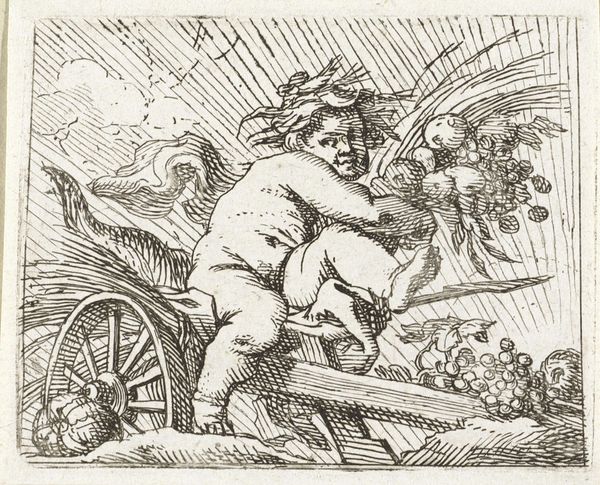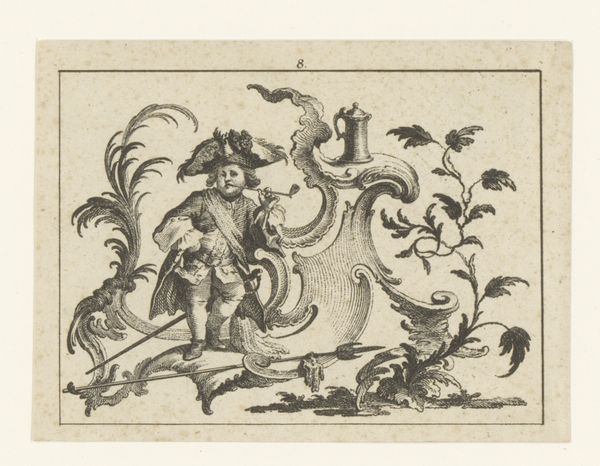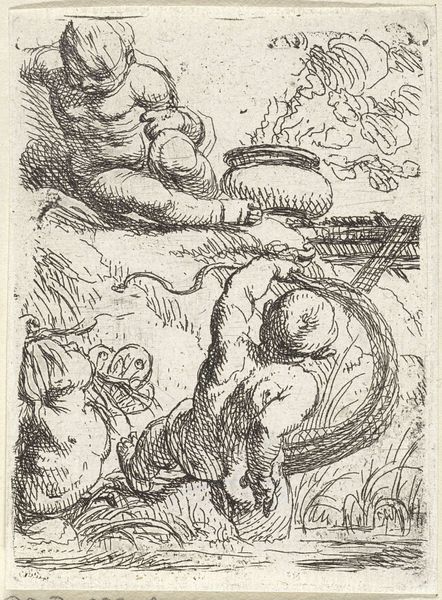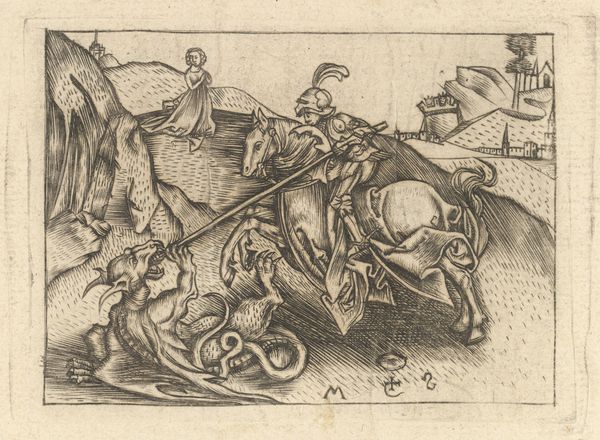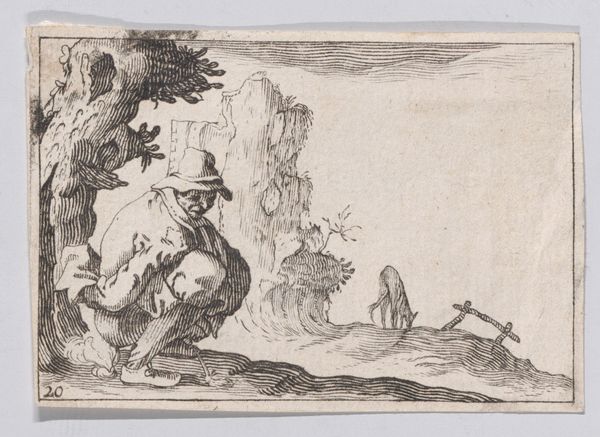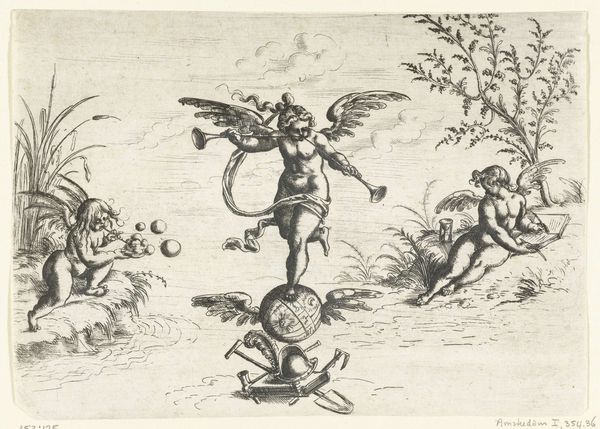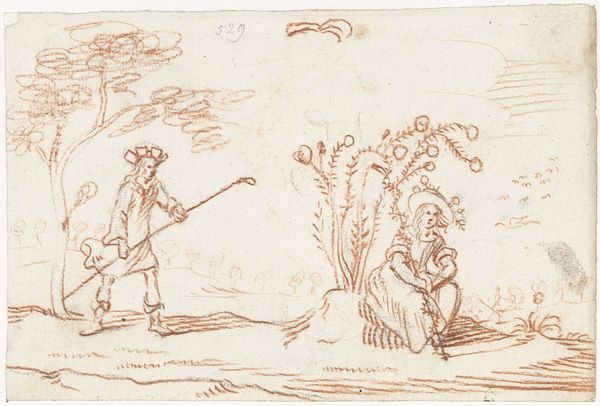
drawing, print, ink
#
drawing
#
allegory
# print
#
mannerism
#
figuration
#
ink
Dimensions: sheet: 3 7/16 x 8 3/8 in. (8.8 x 21.2 cm)
Copyright: Public Domain
Curator: This peculiar print, "Procession of Monstrous Figures," comes to us from Wendel Dietterlin the Younger around 1615. It’s currently held here at the Met. Editor: Immediately, the stark contrast in the ink work gives it such a raw, almost grotesque feel. Did he intend such monstrous depictions? Curator: Well, Dietterlin was working squarely within the Mannerist style. It was a period given to highly stylized, often exaggerated forms. So, yes, these figures are very much intentional in their deviation from naturalism. What draws me in, though, is the potential political allegory within these monsters. Editor: Political, how so? Given his meticulous use of line in the printmaking process, I find it challenging to ignore the labor it must have required to generate all this detail, this vision. How might that craft connect with your concept of political allegory? Curator: Dietterlin was working during a time of intense social and religious upheaval. These "monstrous figures" can be read as caricatures, perhaps representations of the follies and corruptions of societal figures. Editor: So, the artist utilizes caricature as a medium of dissent—the exaggerated bodies, for instance. It’s interesting, isn’t it, how the bodies become the site of symbolic projection. He shapes and reshapes figures out of existing power dynamics. And those details – what kind of ink, paper, press? Where were those produced, distributed? This network, that too shapes meaning. Curator: Absolutely. We also need to look at the audience Dietterlin was engaging with. Prints, unlike paintings, allowed for wider dissemination of ideas. So while his artistic style would appeal to collectors of such items, it also might have influenced popular opinion, particularly given the volatile socio-political backdrop of 17th century Europe. It's a compelling intersection of art, power, and printmaking. Editor: I'm compelled by this interaction of meticulous labor and the political charge we've unpicked within the material constraints of the printing process. It grounds these ‘monstrous figures’ into tangible critiques born from a place and time of upheaval, beyond pure stylistic intention. Curator: Indeed, a journey from the aesthetic to the socio-political with every line etched by Dietterlin, a lens into early modern anxieties, mirrored monstrously back at the era.
Comments
No comments
Be the first to comment and join the conversation on the ultimate creative platform.




